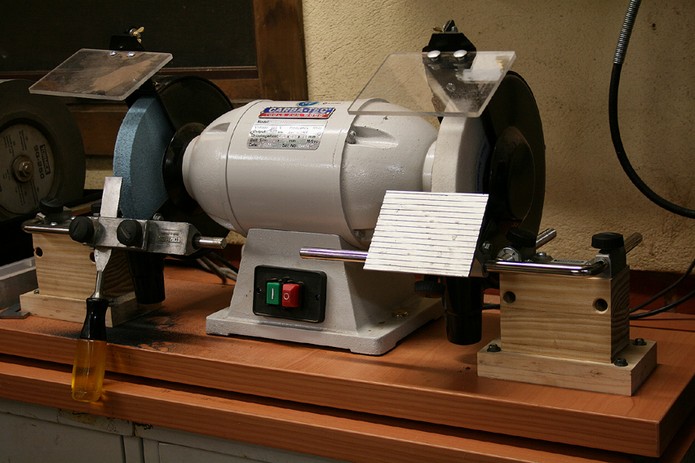Derek, the Tormek man, beat me to an answer but I will leave my comments too incase some of it helps...
I have the same Tormek and have had more than my share of problems grinding on it. I have made several posts concerning the use of this grinding devise over the years and may have a few additional pointers. You don't mention specifically what you are attempting to sharpen and Tormek makes different tool holders to sharpen different tools. Assuming you want to sharpen plane irons and chisels like many other posters you may want the jig (Tormek Square Edge Jig) that holds those tools flat against the grinding stone. If you have an older Tormek and bought the original jig for holding those tools you should know that the original jig was notorious for not holding the tools square. The newer/current version of this devise is much improved.
I am not sure the reason many people hollow grind tools is clear above so I will attempt to explain why I think it is popular. Many people grind the bevel of their tool with the wheel and then do their subsequent touch up sharpening on regular stones of some sort, frequently by hand. The hollow grind creates a flat area at the top and bottom of the blade, as David mentions. It is easier to feel those two fine lines registering against a stones surface than it is to try to register the entire blades surface on the stone. Typically, trying to register the entire blade against the stone creates a convex instead of concave surface. The convex surface tends to rock back and forth often removing steel without sharpening, sort of the opposite of what the OP was expecting. Advocates of hollow grinding feel that they can restore a hollow ground blade by hand with minimal strokes over a stone, being successful because of the greater tactile feedback. The work requires less time on the stone because a much smaller area is being abraded.
The main issues I hear of in regard to the Tormek is the stone abrades metal slower than a high grit dry stone and the wheel tends to wet the user and work area down as well as the blade being worked. On the positive side the larger Tormek stone makes a shallower hollow that can be ground almost flat, removing less steel. The wet stone want burn the steel, although dry stones have improved and some feel they are safe in the hands of experienced users. All the information I have found indicates that the "other" Tormek stones are slower and harder to maintain than the original. Everyone seems to agree that the newer diamond stone flattening device is needed to keep the stone flat. The stone provided with the Tormek may work for roughing the stone but not for flattening.






 Reply With Quote
Reply With Quote






